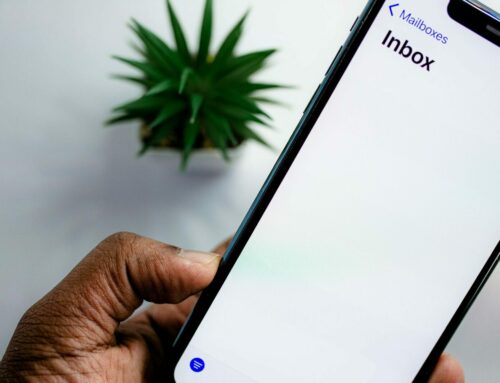Optimizing Your Integrated Marketing Campaigns: Tips for Continuous Improvement
Following the measurement and analysis of key metrics across your email, display, and SMS channels, the next step in your integrated marketing journey is continuous optimization. The digital marketing landscape is ever-evolving, so ensuring your campaigns are adaptable and data-driven is essential to staying ahead of the competition. In this article, we’ll explore actionable tips to help you refine your marketing efforts and maximize results over time.
1. Leverage A/B Testing Across Channels
A/B testing, or split testing, is one of the most effective methods for optimizing your integrated marketing campaigns. This involves running two versions of a marketing asset (such as an email, display ad, or SMS) to see which one performs better. Here’s how you can apply A/B testing across your channels:
- Email: Test subject lines, email design, call-to-action (CTA) buttons, and content length. For example, one email might have a shorter, punchier subject line, while the other is more descriptive. Analyzing the open rate will reveal which approach resonates best with your audience.
- Display Ads: Experiment with different ad creatives, messaging, and audience targeting. For example, you could test static image ads against animated ones or change the tone of your messaging from formal to more conversational.
- SMS: Test different message lengths, tone, and timing to optimize response rates. For instance, sending an SMS at different times of the day could help you understand when your audience is most likely to engage.
By consistently running A/B tests, you can gain valuable insights into what works best for your audience, leading to incremental improvements in campaign performance.
2. Personalize Your Messaging
Personalization is key to boosting engagement and conversions. Consumers are more likely to interact with content that feels tailored to them, and integrated marketing campaigns offer plenty of opportunities to create personalized experiences:
- Email: Use data to personalize subject lines, body content, and product recommendations based on past interactions or purchasing behavior. For instance, a customer who recently browsed a product on your website could receive an email featuring that product along with a limited-time offer.
- Display Ads: Dynamic ads can showcase different content based on the viewer’s previous behavior, such as retargeting users with items they viewed but didn’t purchase.
- SMS: Sending personalized messages like birthday offers or product suggestions based on past purchases can enhance the sense of direct communication.
The more relevant your content is to individual users, the higher the likelihood they will engage with it.
3. Optimize for Mobile
Mobile devices have become the primary mode of communication for many users, especially when it comes to email and SMS. Ensuring your integrated marketing campaigns are mobile-friendly is crucial to maximizing engagement:
- Email: Make sure your emails are optimized for mobile with responsive design, shorter content, and large, tappable buttons.
- Display Ads: Optimize display ads for mobile to ensure fast loading times, clear visuals, and concise messaging that grabs attention on smaller screens.
- SMS: Given that SMS marketing is inherently mobile, focus on clear and concise messaging that conveys value in a few words. Include direct links to mobile-optimized landing pages for seamless user experience.
4. Enhance Automation and Workflow Efficiency
Marketing automation allows you to streamline repetitive tasks, making your campaigns more efficient while freeing up time for strategy and creativity. Here’s how automation can benefit your integrated campaigns:
- Email Automation: Implement automated workflows for welcome series, cart abandonment emails, and re-engagement campaigns. By sending emails automatically based on user behavior, you can nurture leads and drive conversions without manual intervention.
- Display Advertising Automation: Use programmatic advertising to automatically bid on ad placements in real-time, ensuring your ads are shown to the right audience at the right time.
- SMS Automation: Automate follow-up SMS campaigns after certain user actions, such as sending a thank-you message after a purchase or reminding customers of an upcoming event.
By incorporating automation into your campaigns, you can respond to customer actions in real-time, improving the customer journey while reducing manual efforts.
5. Refine Segmentation and Targeting
The success of any marketing campaign relies on how well you understand your audience. Refining your audience segmentation allows you to deliver more relevant content, improving engagement and conversion rates:
- Email: Segment your email list based on demographic data, purchase history, or engagement levels. For example, you could create separate email campaigns for first-time customers versus loyal repeat buyers.
- Display Ads: Use audience targeting tools to deliver your ads to specific segments based on interests, behaviors, or geographical location.
- SMS: Create tailored SMS campaigns for different audience segments, ensuring your messages speak directly to the needs and interests of each group.
Effective segmentation ensures that each piece of content resonates with the intended audience, boosting the likelihood of success.
6. Focus on Cross-Channel Consistency
Integrated marketing campaigns are most effective when each channel works together to create a cohesive brand experience. Consistency across email, display ads, and SMS is crucial for reinforcing your message and building brand trust:
- Unified Messaging: Ensure that your messaging is consistent across all channels, both in tone and content. For example, if you’re running a seasonal promotion, make sure the same offer and visuals are used in emails, display ads, and SMS campaigns.
- Seamless User Experience: Create a seamless journey for users moving between channels. For example, a user who clicks on an ad and enters their email for a promotion should receive a follow-up SMS or email confirming the next steps.
When your campaigns are aligned, they create a stronger impact and increase the likelihood of conversions.
7. Regularly Review and Adapt Your Strategy
Lastly, always review the results of your campaigns and adapt based on the data. Digital marketing trends, consumer behaviors, and technology change rapidly, so it’s essential to stay flexible:
- Analyze Performance: Look at your cross-channel metrics regularly to understand what’s working and what’s not. Identify trends, opportunities, and areas for improvement.
- Test New Channels: As new marketing channels and technologies emerge, consider integrating them into your strategy. For example, conversational marketing via chatbots or interactive ads could offer new ways to engage your audience.
- Reallocate Budget: Use performance insights to adjust your budget allocation across channels. If display ads are outperforming email in a particular campaign, shift more resources to capitalize on that success.
Conclusion
Optimizing your integrated marketing campaigns is an ongoing process that requires continuous testing, personalization, and analysis. By leveraging the strategies outlined above—such as A/B testing, personalization, automation, and segmentation—you can refine your approach to maximize engagement and conversions across email, display, and SMS channels. Regularly reviewing performance and adapting your strategy will ensure your campaigns remain relevant and effective in today’s fast-paced digital landscape.
With the right mix of creativity and data-driven decision-making, you’ll be well-positioned to achieve long-term success in your integrated marketing efforts.
Related Posts




